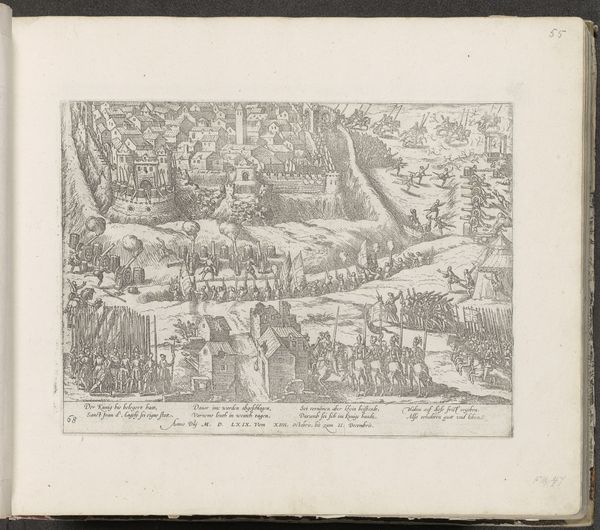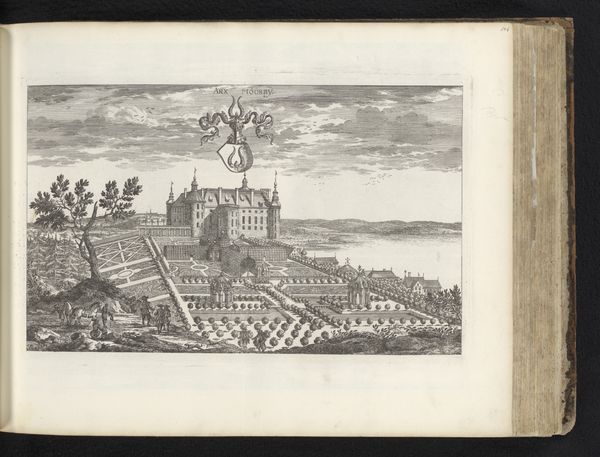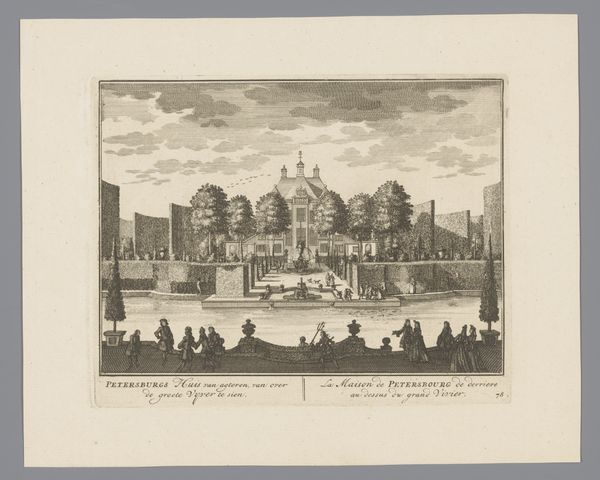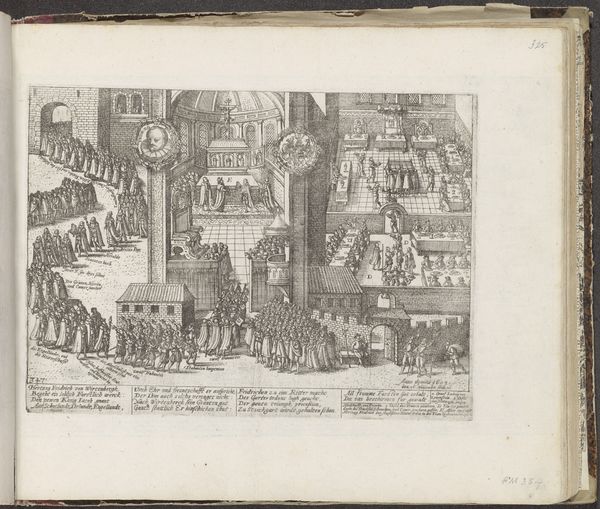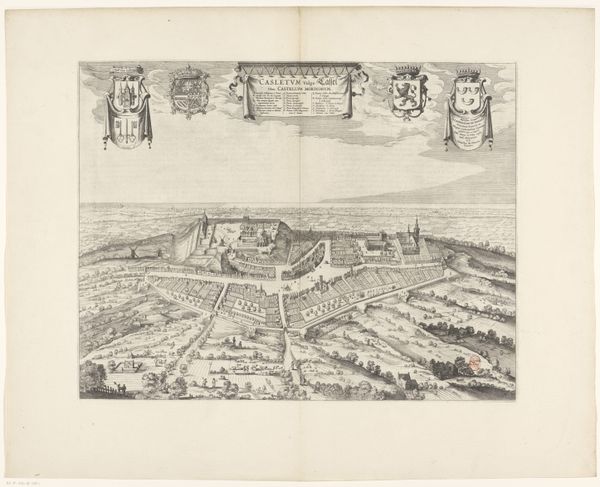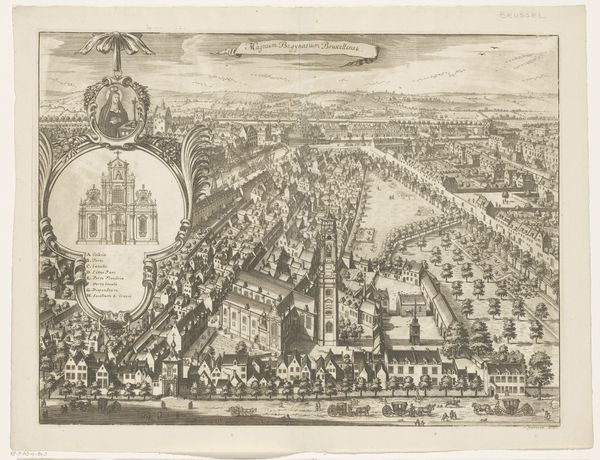
print, paper, ink, engraving
#
baroque
#
dutch-golden-age
#
ink paper printed
# print
#
old engraving style
#
landscape
#
paper
#
ink
#
cityscape
#
engraving
Dimensions: height 334 mm, width 442 mm
Copyright: Rijks Museum: Open Domain
Romeyn de Hooghe created this print, Erepoort op de markt, in 1691, portraying a triumphal arch erected in a marketplace. De Hooghe was working during a pivotal time in Dutch history known as the Dutch Golden Age, a period marked by immense economic prosperity and cultural flourishing. However, this prosperity was built, in part, on the exploitation of enslaved people and colonial expansion. The triumphal arch, a temporary structure built for celebratory occasions, thus becomes a loaded symbol. It represents not only civic pride and accomplishment but also the complex and often brutal realities underlying that success. Consider the figures in the print: are they participants in a shared moment of celebration, or are they silent witnesses to a narrative that excludes many? The architecture itself reflects power, while the temporary nature of the structure can remind us of the fleeting nature of these achievements when built upon injustice. De Hooghe’s print invites us to reflect on the stories a nation chooses to tell itself and the uncomfortable truths it often leaves out.
Comments
No comments
Be the first to comment and join the conversation on the ultimate creative platform.

